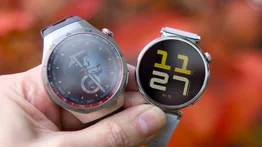Microsoft Band 2 review

Small improvements to the design (and big ones to fitness tracking) but the Band 2 still isn’t particularly comfortable to wear 24/7
Specifications
Pedometer: Yes, Heart-rate monitor: Yes, Display size: 32×12.8mm, Resolution: 320×128, OS support: Windows Phone 8.1+, iOS 8.1.2+, Android 4.3+, Battery life: 48 hours
Exercise tracking
Unsurprisingly for a wearable focused on fitness, the Band 2 is adept at all kinds of exercise. The most common use will likely be either running or cycling, at which it both excels. The integrated GPS produces a route map without relying on your phone, saving its battery, although the time it takes to lock in your location varies greatly; sometimes I was waiting five minutes before it got a lock.

You get the option to enable GPS before starting an activity, but even with it disabled you’ll still get important metrics such as activity duration, calories burned, heart rate, recovery time (how long you should wait before attempting more exercise) and even a fitness benefit, suggesting whether you’re improving over time. It also estimates your VO2 max while running, which can be a useful metric when pacing yourself in preparation for greater distances. Heart rate tracking is reasonable, but with no option to adjust the polling rate, serious athletes may not appreciate the limited degree of accuracy.
One of the original Band’s unique features was Guided workouts, acting as a personal trainer with customisable workouts that can be downloaded. They return here, now with over 100 different workouts available. Once activated, the first activity in the workout is displayed alongside a timer, with the Band vibrating when you’re done. If you finish before the timer expires, pressing the Action button moves on to the next activity.

Golf might not be as strenuous as a guided workout, but the Band 2 can still help on the links. You can download courses through the companion app and use the Band’s GPS to display information like distance to the hole, drive distance and even act as an automatic score card. It senses your swing and whether you make impact with the ball, so can detect practice swings, but with no golf club members on staff and an inability to drive a ball to save my life, I couldn’t test its accuracy.
As before, the Band 2 is also compatible with a range of third party apps that can be downloaded separately from Microsoft’s own Health app. The selection depends entirely on your smartphone OS, but compatibility with Runkeeper and Strava are universal across Android, iOS and Windows Phone. It also tracks calories burned throughout the day and counts your steps, too, although there’s no option to disable metabolic calorie counting, and the step count seemed rather high compared to the Apple Watch I was wearing on my other wrist.
Companion app
Microsoft’s Health app is almost as important as the Band itself. Almost everything is configured through the app, right from the initial setup, and all your synced data is saved here for quick access and analysis. It unsurprisingly uses a familiar Windows Phone design, filled with coloured blocks and bold text regardless of your smartphone OS, but is easy to navigate and surprisingly in-depth once you dig down into each menu.

It’s a shame that the Band 2 still doesn’t do much with the data Microsoft Health collects. At launch, it wouldn’t prompt you to get up and take a stretch every hour or so, but thankfully Microsoft has now added the feature in an update. Even so, sleep tracking is only useful if there’s any indication of how to improve – Microsoft Health simply says whether you’re lightly or moderately rested.
This is especially annoying when you consider how much effort Microsoft has gone to in expanding its Health web hub; there are literally hundreds of ways to display and interact with your data, share it with others and get feedback on your performance. It’s one of the best web interfaces around, yet you have to work hard to get useful metrics from the band and app themselves.

Conclusion
The Band 2 is an improvement over the original, then, but not a massive one. Despite tweaking the design of the original, issues such as the bulky strap return, albeit to a lesser extent. The curved screen is a genuine improvement, as is the premium metal finish, and battery life is finally long enough to get you through a working day when you’ve enabled GPS for the morning commute.
It’s primarily a fitness wearable, so while it has rudimentary smartwatch features, they aren’t up to the same standards as either the Apple Watch or Android Wear. However, it wipes the floor with most dedicated fitness bands thanks to comprehensive tracking metrics and a detailed web interface. If it actively explained what the data it gathered represented, it would be ideal, but currently you have to go out of your way to translate your results into a suggested course of action. When Microsoft works out a way to translate the gathered data and explain to less fitness-minded users (like myself) how to improve, it could be on to a real winner, but right now the Band 2 is still something of an also-ran.
| Hardware | |
|---|---|
| Pedometer | Yes |
| Heart-rate monitor | Yes |
| GPS | Yes |
| Waterproof | Water Resistant |
| Other features | 3-axis accelerometer, Gyrometer, Ambient light sensor, Skin temperature sensor, UV sensor, Capacitive sensor, Galvanic skin response, Microphone, Barometer, smartphone notifications |
| Display | |
| Display size | 32×12.8mm |
| Resolution | 320×128 |
| Display technology | AMOLED |
| Smartphone connection | |
| OS support | Windows Phone 8.1+, iOS 8.1.2+, Android 4.3+ |
| Wireless | Bluetooth 4.0 LE |
| Battery | |
| Battery size | Not stated |
| Battery life | 48 hours |








